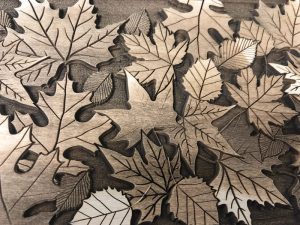 We recently published an article detailing the different markets that your shop can address through the adoption of a laser engraver. We wanted to follow up with these manufacturers to discuss some additional pointers that you should consider when it comes to operating a laser engraver—regardless of whether you are brand new to the game or a seasoned pro already succeeding in the dimensional sign-making business.
We recently published an article detailing the different markets that your shop can address through the adoption of a laser engraver. We wanted to follow up with these manufacturers to discuss some additional pointers that you should consider when it comes to operating a laser engraver—regardless of whether you are brand new to the game or a seasoned pro already succeeding in the dimensional sign-making business.
As mentioned in our previous issue, there are a variety of materials that can be cut or marked—acrylic, wood, anodized aluminum, metal, and glass being some of the most popular. The process of marking or cutting files on substrates is simple once you’ve created the design in CorelDRAW® or Adobe® Illustrator®: just send this file to the engraver software that acts as a printer driver.
Adam Voigt, marketing and sales director at Kern Lasers, says, “Most of the hard work comes from designing a file that fits your customer’s needs. After you have approval from your customer and cut a few small samples out of your material, place the material onto our large format vacuum bed, export the file from CorelDRAW, load your settings, and press ‘start.’”
There are pre-tested laser parameters readily available on laser engravers that you can select from; doing so can drastically reduce set-up time.
“Select the correct material category, focus the laser head for optimal results, and begin processing,” says David Stevens, Industrial Applications manager at Trotec Laser.
To keep one’s laser engraver well maintained and continuing to allow your shop to profit within the personalization market for years to come, Kevin Rosen, application specialist at Roland DGA, urges new owners to read the user’s manual completely and also to take advantage of any seminars or Webinars that become available. He also offers some addition maintenance tips:
- “Remove all debris after each job and ensure that the cutting area is clean to ensure optimum performance and results. Inspect and clean the focus lens and all mirrors in the machine up to two times per week (based on usage).
- “Clean and lubricate the railing systems so the laser carriage can move freely.
- “Check the auto-focus pens to make sure they are clean and in good working order.
- “Test files before going directly into production.”
Stevens advises that the two biggest general maintenance tips Trotec gives its customers are to keep the machine’s internal filter system and its optics clean. “One of the single biggest factors in helping to keep your laser clean is the exhaust blower/internal filter system,” he says. “If this item is under-specced or not well maintained, it’s almost like not using one at all.
“Optics are the single biggest factor in retaining image quality, so it is important to regularly visually inspect the optics for residue buildup, dust and debris, or fingerprint smudges and clean the lens before use.”










